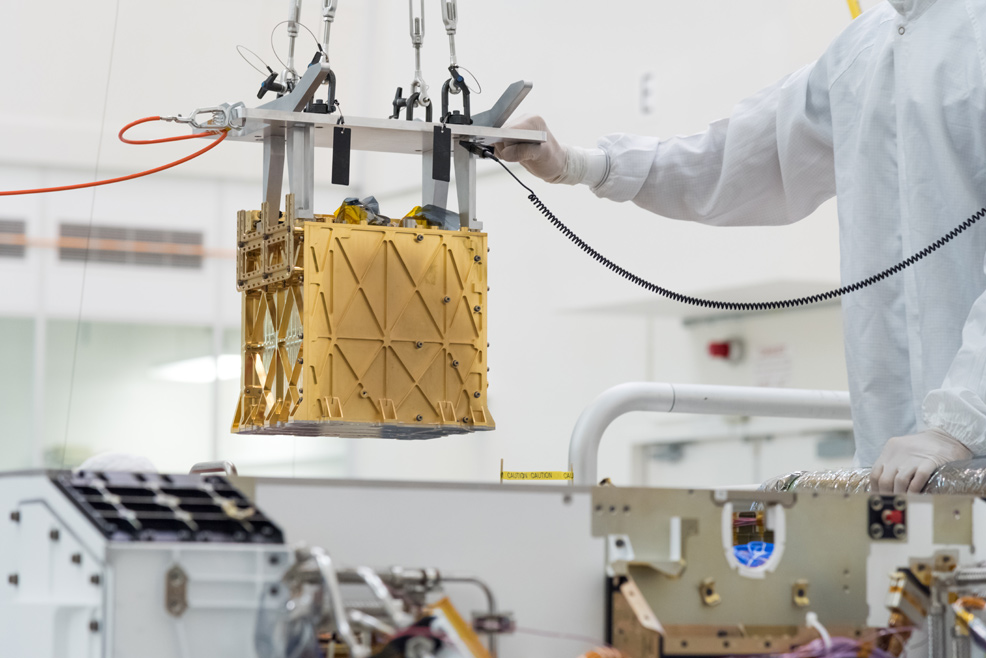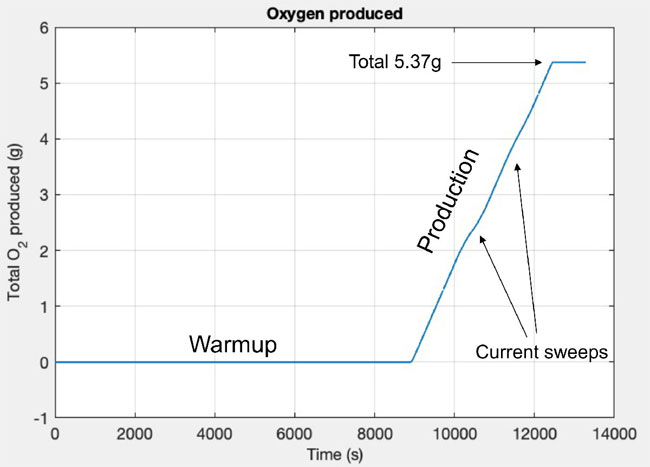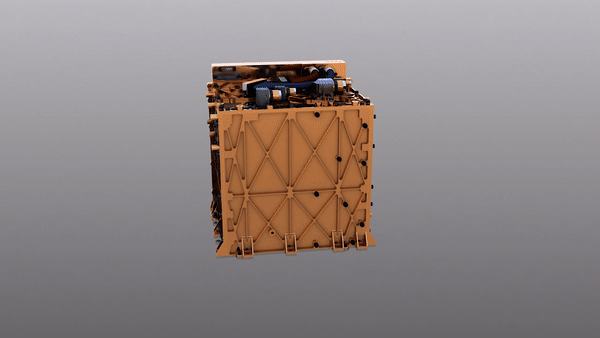
24th April 2021 Carbon dioxide turned into oxygen on Mars Perseverance has performed a test of its MOXIE instrument to convert carbon dioxide into oxygen for the first time on Mars.
This week, NASA made headlines when its Ingenuity helicopter – part of the Mars 2020 mission – rose 3 m (9.8 ft), hovered in the Martian air for 30 seconds and then landed back down, with a total flight time of 39.1 seconds. This became the first powered flight on another planet in history. The test location is now named "Wright Brothers Field" in honour of US brothers Orville and Wilbur Wright, who first flew a powered aircraft on Earth in 1903. A day later, the space agency achieved a further scientific milestone by operating the Mars Oxygen In-Situ Resource Utilization Experiment (MOXIE). This is a small instrument within the Perseverance rover, designed to capture carbon dioxide (CO2) from the thin Martian air and convert it to oxygen. Intended as a technology demonstration for future missions, MOXIE is the first experimental extraction of a natural resource from another planet for human use. Mars' atmosphere is 96% carbon dioxide. MOXIE works by separating oxygen atoms from carbon dioxide molecules, which are made up of one carbon atom and two oxygen atoms. A waste product, carbon monoxide, is emitted into the Martian atmosphere. The conversion process requires a temperature of 800°C (1,470°F). To accommodate this, MOXIE is made of heat-tolerant materials – including 3D-printed nickel alloy parts, which heat and cool the gases flowing through it, and a lightweight aerogel that helps hold in the heat. A thin gold coating on the outside of MOXIE reflects infrared heat, keeping it from radiating outward and potentially damaging other parts of Perseverance.
During its initial test, MOXIE produced 5.37 grams of oxygen, equivalent to about 10 minutes' worth of breathable oxygen for one astronaut. A further nine tests are planned over the next Martian year (two Earth years), which are expected to generate higher volumes of around 10 grams of oxygen per hour. NASA is aiming to run the instrument in varying atmospheric and temperature conditions – such as different times of day and seasons. Oxygen will be vital for establishing a long-term human presence on Mars. If scaled up for use in a crewed mission, instruments like MOXIE could provide a constant supply of breathable air, as well as oxidisers, propellants, and water by combining the produced oxygen with hydrogen. MOXIE is about the size of a car battery, with a mass of 17.1 kg and has a 300-watt power supply. According to NASA, future oxygen generators that support human missions on Mars will need to be around 100 times larger. "This is a critical first step at converting carbon dioxide to oxygen on Mars," said Jim Reuter, associate administrator of the Space Technology Mission Directorate (STMD) at NASA. "MOXIE has more work to do, but the results from this technology demonstration are full of promise as we move toward our goal of one day seeing humans on Mars. Oxygen isn't just the stuff we breathe. Rocket propellant depends on oxygen, and future explorers will depend on producing propellant on Mars to make the trip home."
Comments »
If you enjoyed this article, please consider sharing it:
|









